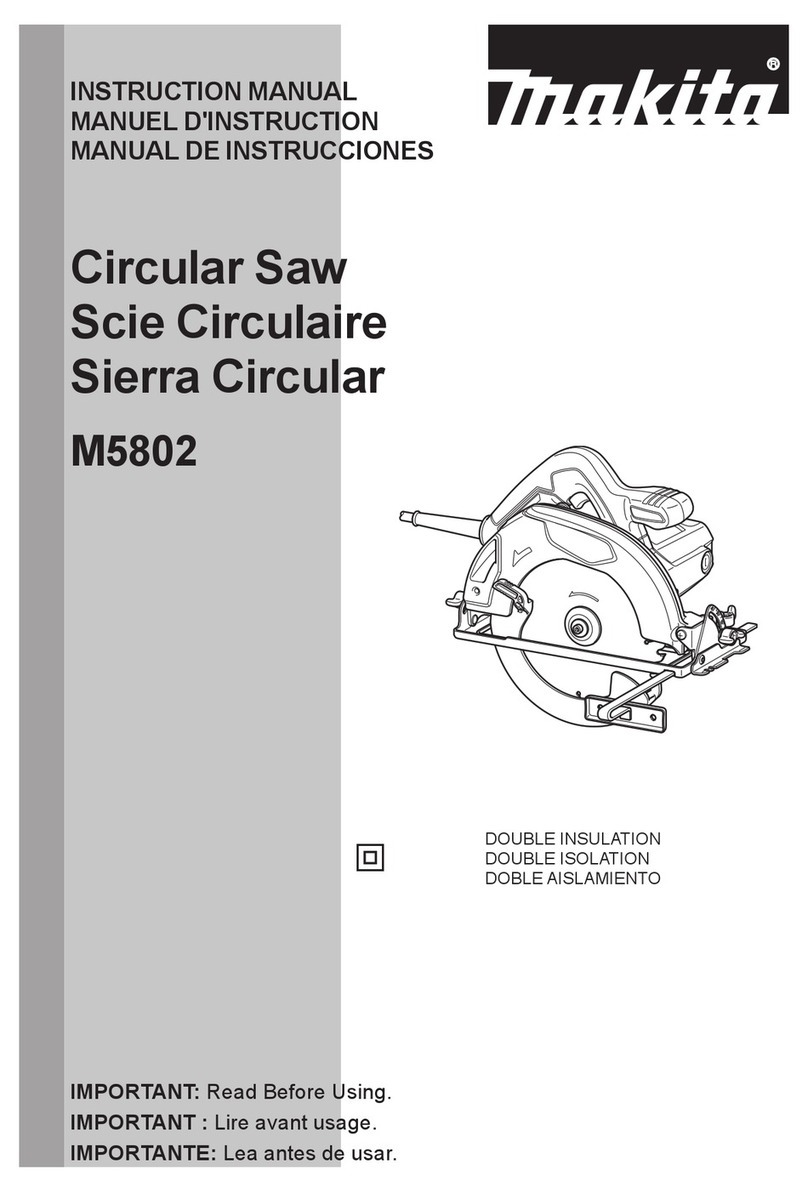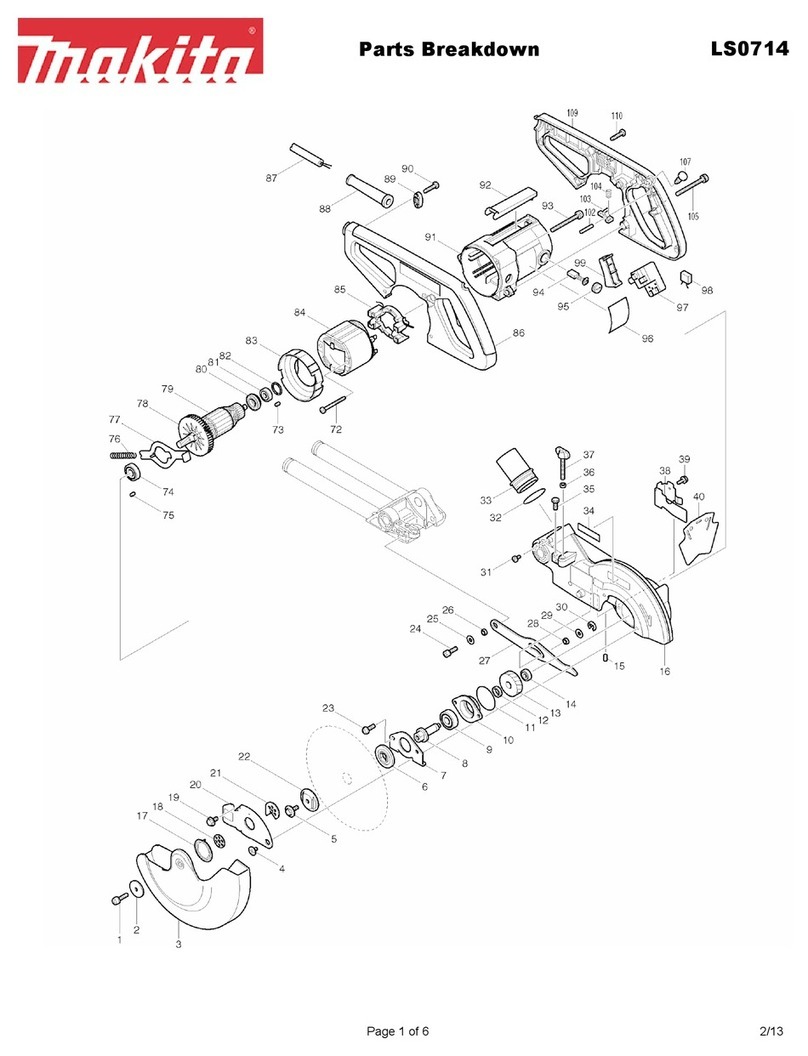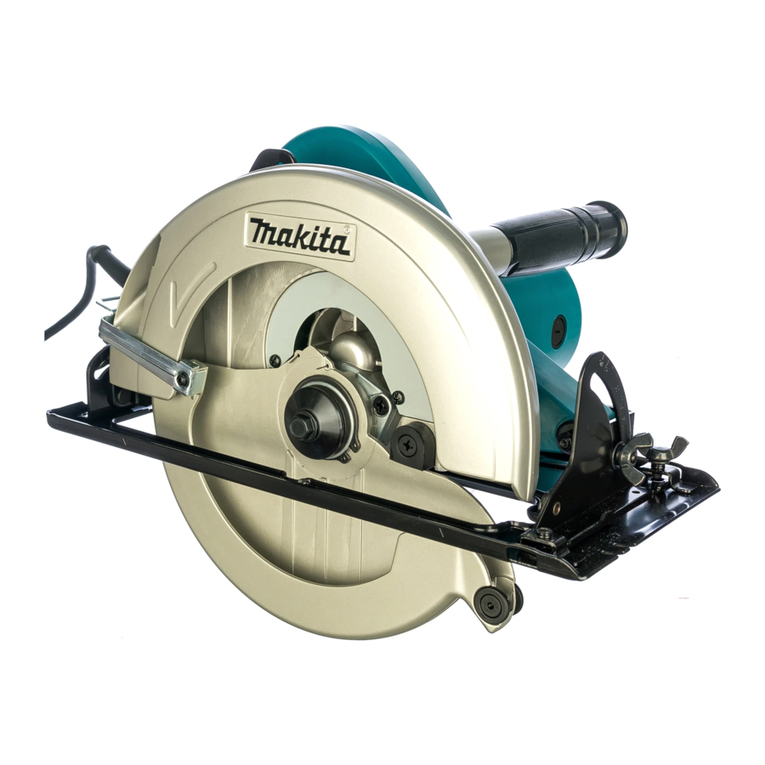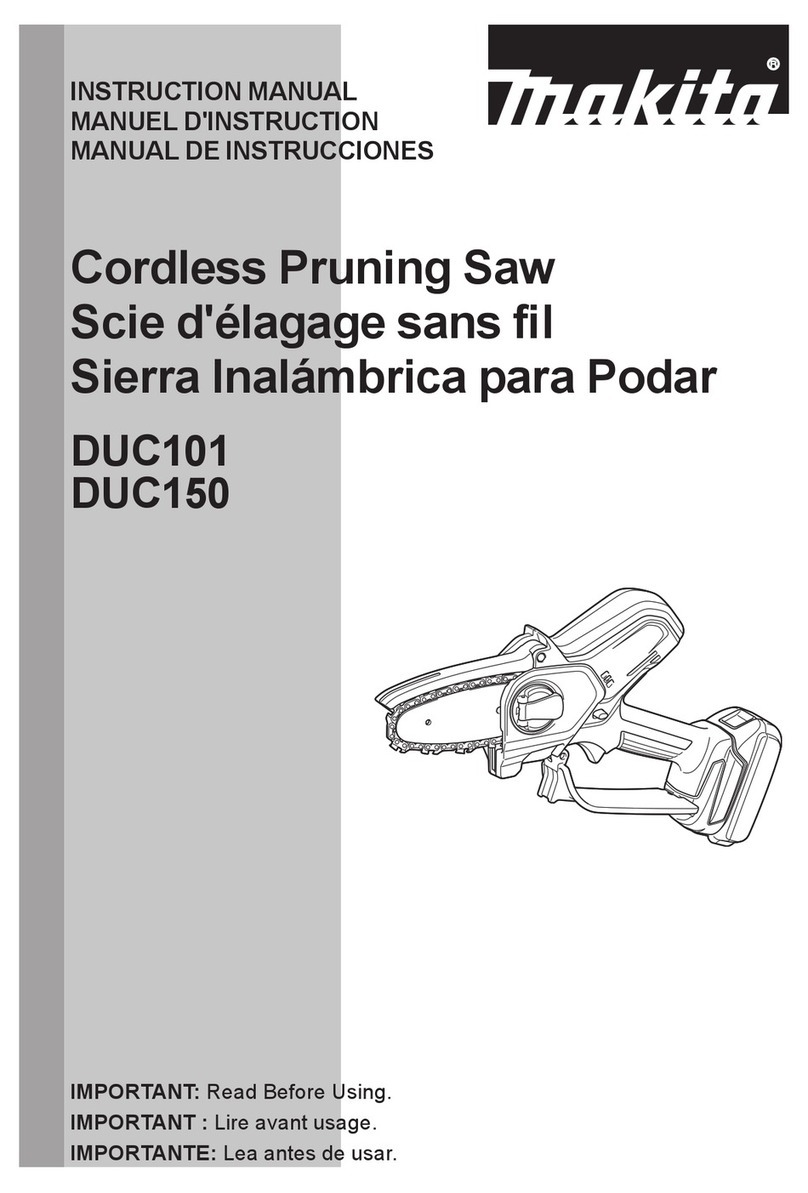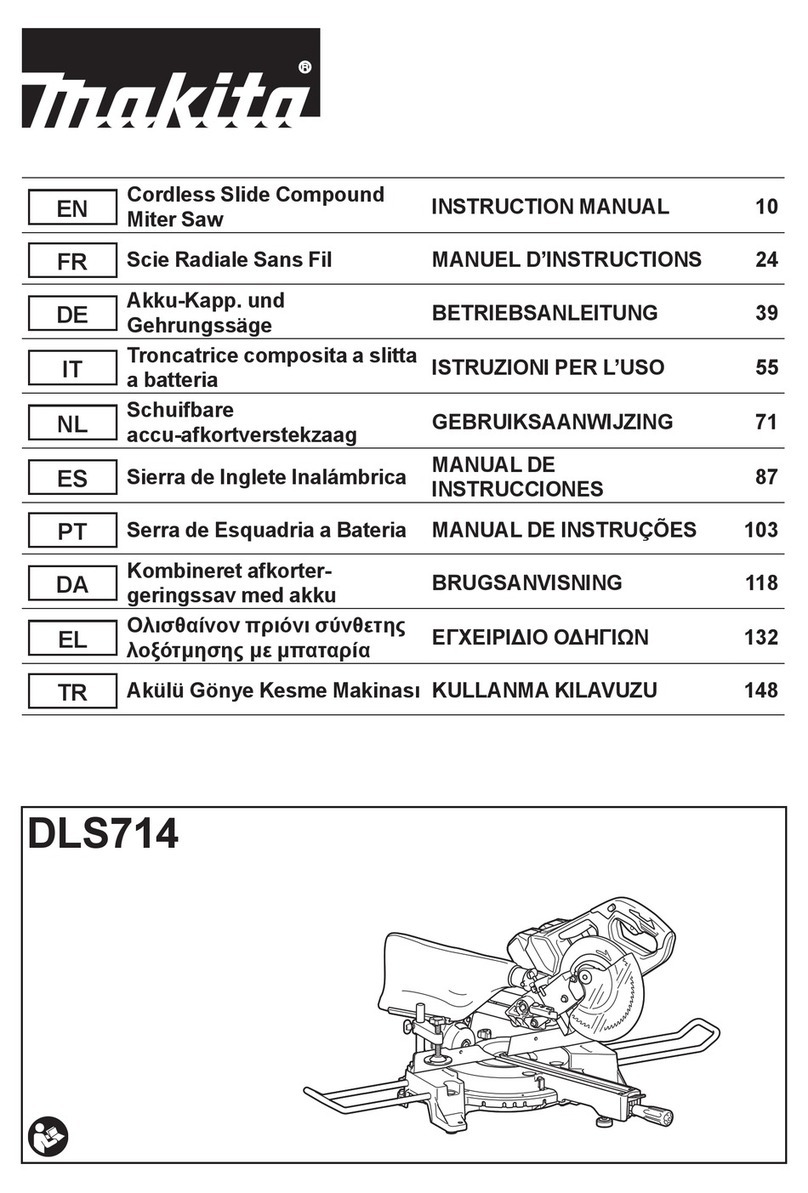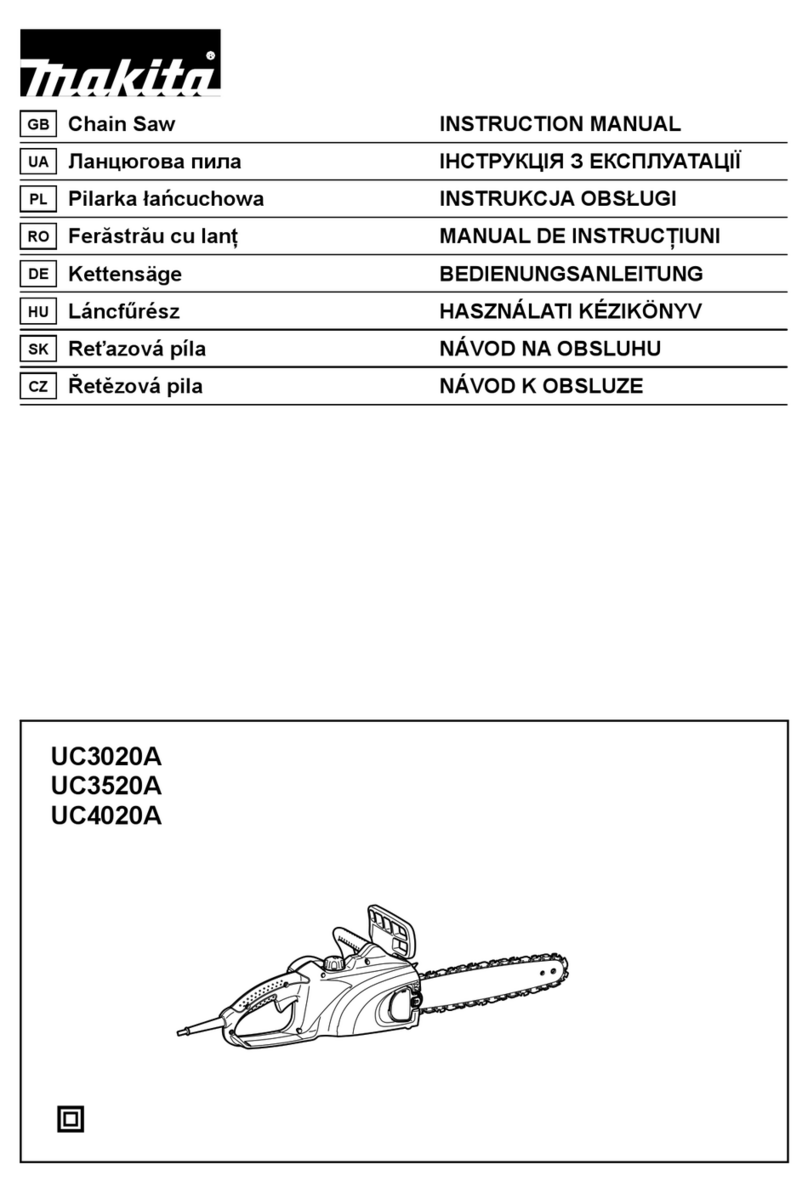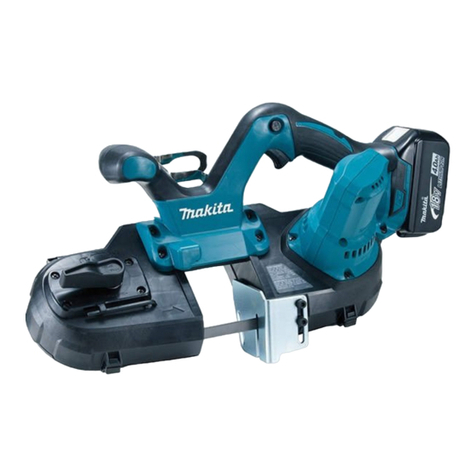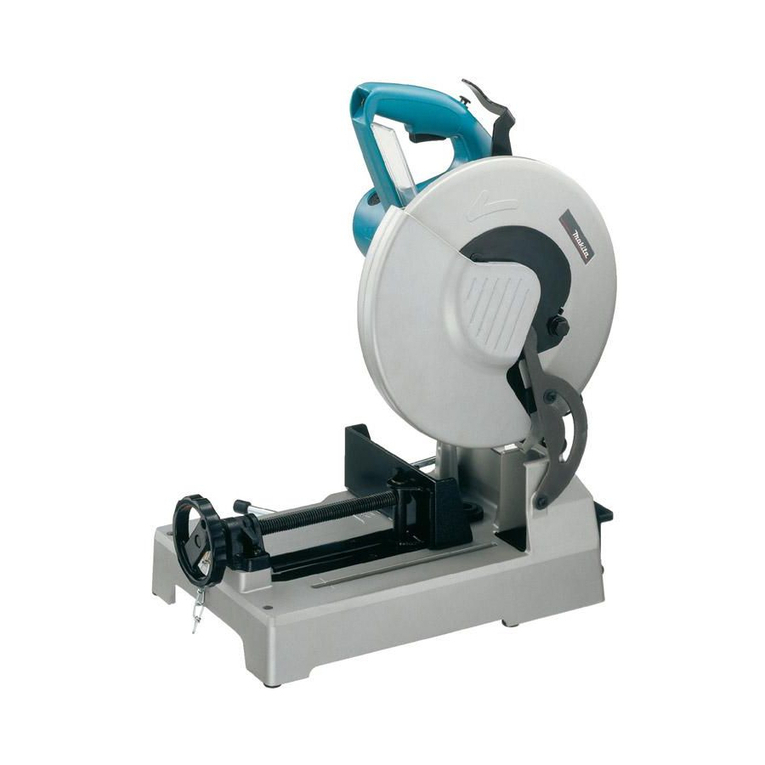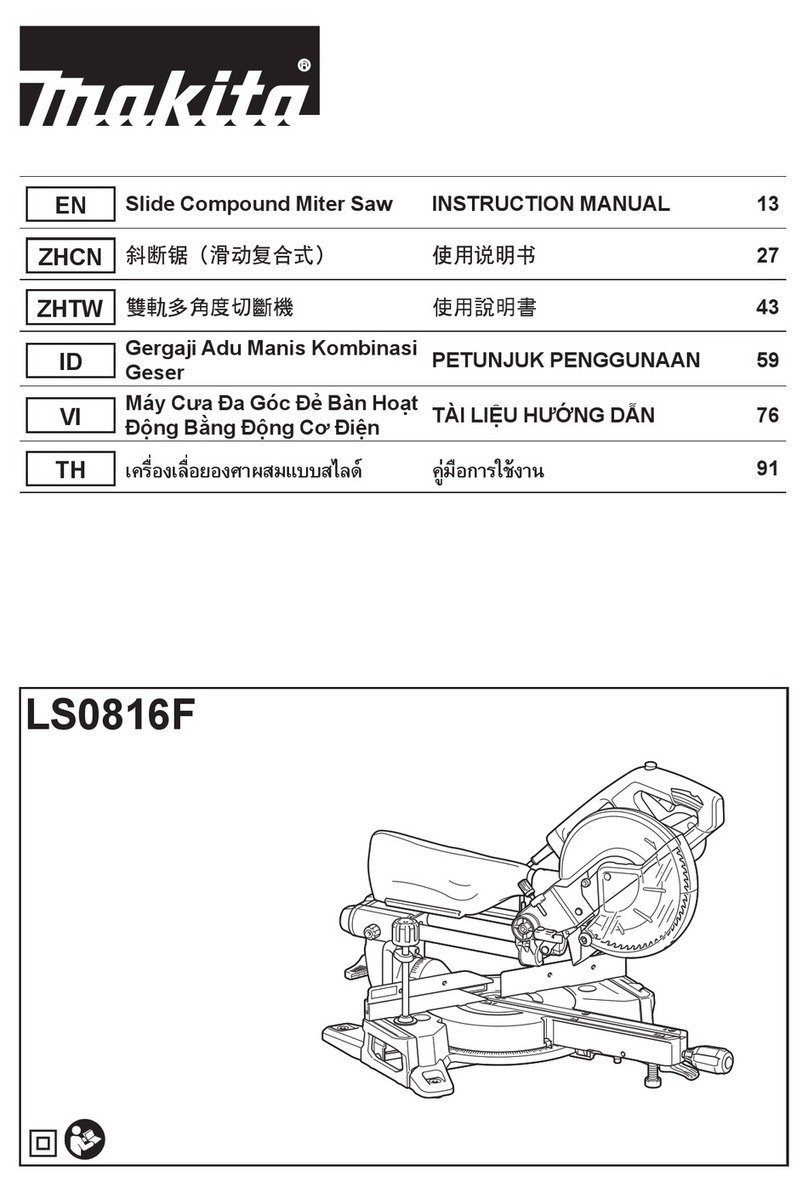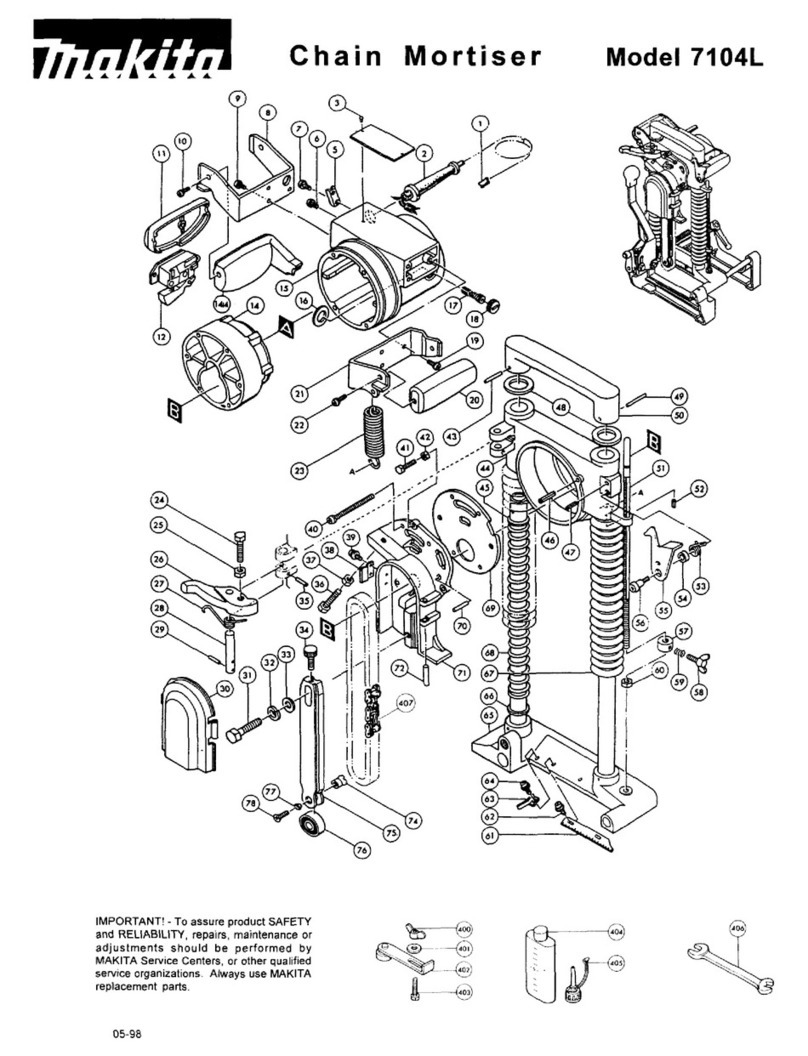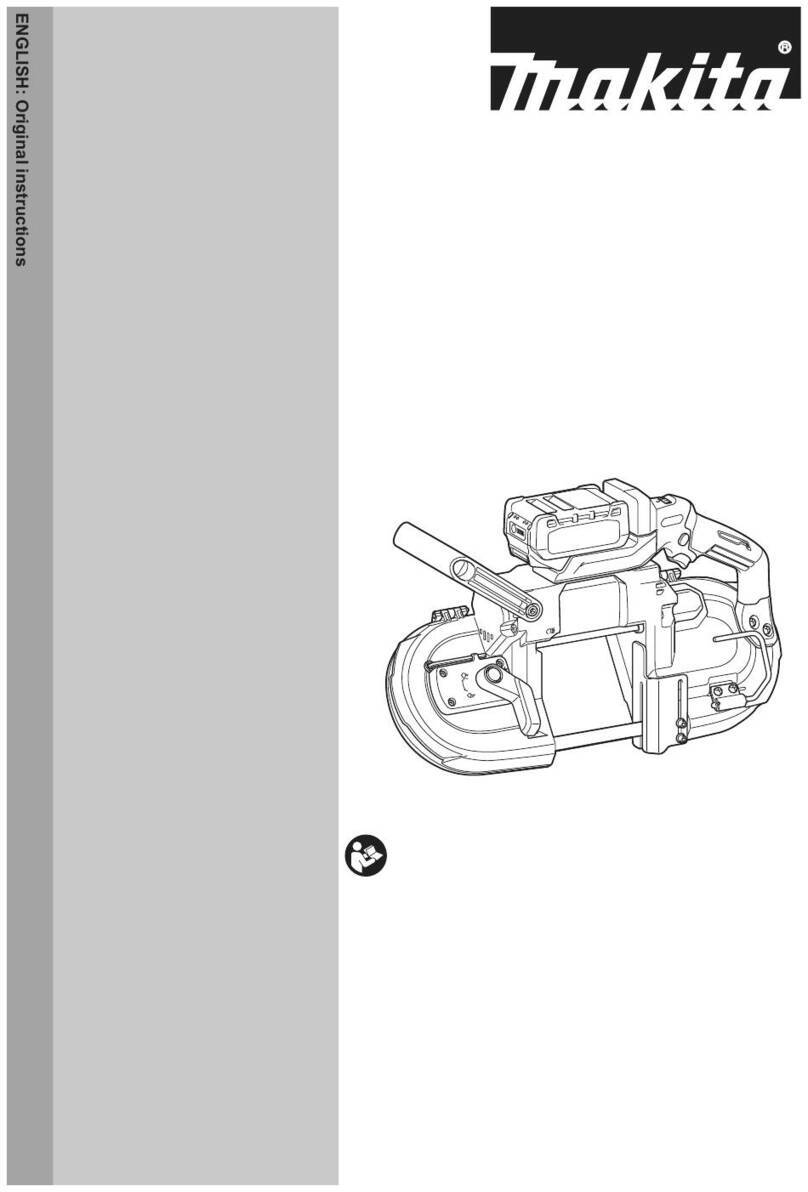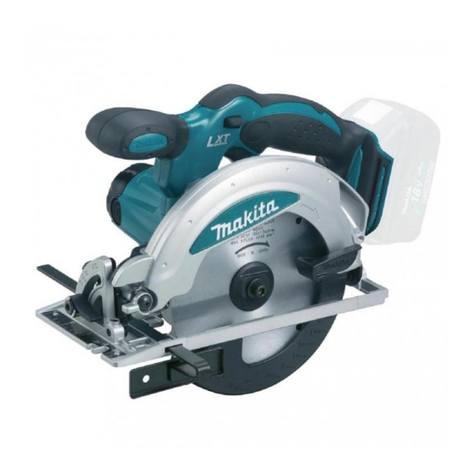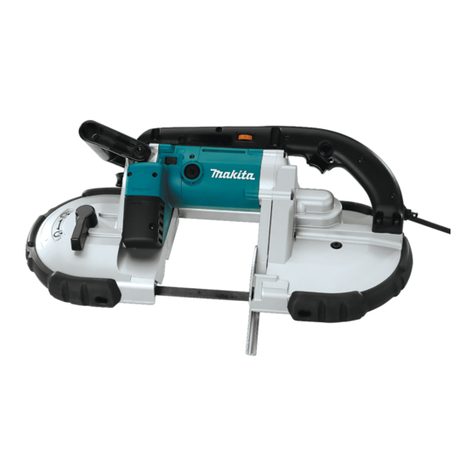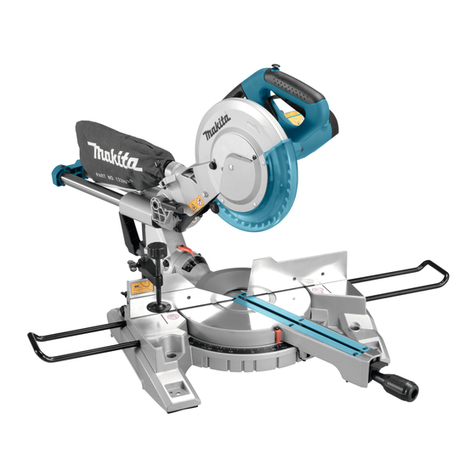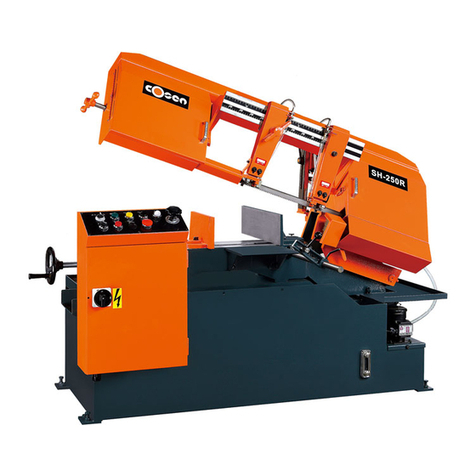VOLTAGE WARNING: Before connecting the tooltoa power source (receptacle,
outlet, etc.) be sure the voltage supplied is the same as that specified on the
nameplate of the tool. A power source with voltage greater than that specified
for the tool can result inSERIOUS INJURY tothe user
-
as well as damage to
the tool.
If
in
doubt, DO NOT PLUG
IN
THE
TOOL. Using a power source with
voltage less than the nameplate rating is harmful to the motor.
ADDITIONAL SAFETY RULES
1.
2.
3.
4.
5.
6.
7.
8.
9.
IO.
11.
12.
13.
14.
15.
16.
17.
18.
19.
20.
Wear eye protection.
Do
not operate saw without guards in place.
Don't use the tool
in
the presence of flammable liquids
or
gases.
Check the blade carefully for cracks or damage before operation.
Replace cracked or damaged blade immediately.
Use only flanges specified for this tool.
Becareful nottodamagethe arbor, flanges (especiallythe installing surface)
or bolt. Damage to these parts could result
in
blade breakage.
Make sure that the turn base is properly secured
so
it
will not move during
operation.
Foryour safety, removethechips, small pieces, etc. fromthetable topbefore
operation.
Avoid cutting nails. Inspectfor and removeallnailsfromthe workpiece before
operation.
Make sure the shaft lock is released before the switch is turned on.
Be sure that the blade does notcontacttheturnbase
in
thelowestposition.
Hold the handle firmly. Be aware that the saw moves up or down slightly
during start-up and stopping.
Do not perform any operation freehand. The workpiece must be secured
firmly against the turn base and guide fence during all operations.
Keephandsout of pathof saw blade. Avoid contactwithany coasting blade.
It
can still cause severe injury.
Never reach around saw blade.
Make sure the blade
is
not contacting the workpiece before the switch is
turned on.
Before using the tool on an actual workpiece, let
it
run for a while. Watch
for vibration or wobbling that could indicate poor installation or a poorly
balanced blade.
Wait until the blade attains full speed before cutting.
Stop operation immediately if you notice anything abnormal.
Do not attempt to lock the trigger in the on position.
5
